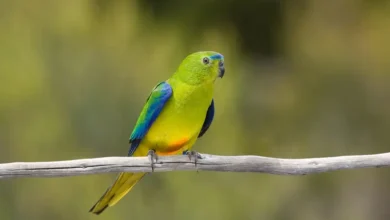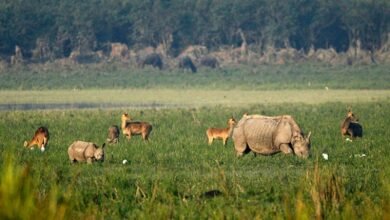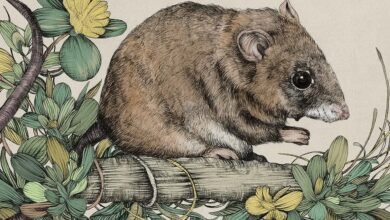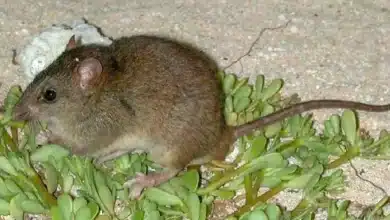Once found throughout south-east Asia, Javan rhinos have suffered a staggering decline in their numbers due to hunting and habitat loss. The lone wild population of Javan rhinos is one of the rarest of the rhino species—around 75 individuals—which can only be found on the island of Java, Indonesia.
Scientific Classification
| Domain: | Eukaryota |
| Kingdom: | Animalia |
| Phylum: | Chordata |
| Class: | Mammalia |
| Order: | Perissodactyla |
| Family: | Rhinocerotidae |
| Genus: | Rhinoceros |
| Species: | R. sondaicus |
Introduction
The Javan Rhino (Rhinoceros sondaicus) is one of the world’s most endangered large mammals, a symbol of the delicate balance between nature and the impacts of human activity. This elusive species, found only in the dense rainforests of Java, Indonesia, has captivated the attention of conservationists and biologists alike due to its critical conservation status and unique ecological role.
Description and Habitat
The Javan Rhino is the smallest of the rhino species, weighing between 900 and 2,300 kilograms and standing about 1.5 meters tall at the shoulder. It has a dusky grey color and a single horn, which is significantly smaller than those of its African relatives, rarely exceeding 25 centimeters. Its skin, which hangs in loose folds, gives it an armor-plated appearance.
Historically, the Javan Rhino roamed across Southeast Asia, from Bangladesh to Vietnam and south through the Malay Peninsula to Sumatra and Java. Today, however, it survives only in Ujung Kulon National Park, located at the western tip of Java. This national park, spanning about 1,206 square kilometers, provides a sanctuary of dense tropical rainforest, freshwater streams, and coastal beaches, ideal for the Javan Rhino’s needs.
Population and Conservation Status
The current population of the Javan Rhino is alarmingly low, estimated to be fewer than 80 individuals. This drastic decline is attributed to habitat loss, primarily due to agricultural expansion and deforestation, as well as poaching driven by the demand for rhino horn in traditional medicine. The Javan Rhino’s critical status on the IUCN Red List underscores the urgent need for effective conservation strategies.
Conservation Efforts
Conservation efforts for the Javan Rhino have been ongoing for decades, with mixed results. Ujung Kulon National Park has been a focal point for these efforts, with measures including anti-poaching patrols, habitat restoration, and monitoring programs using camera traps and genetic analysis.
One of the most significant challenges in conserving the Javan Rhino is the limited genetic diversity within the population, which makes it vulnerable to diseases and reduces reproductive success. To address this, conservationists are exploring options such as habitat expansion and potential translocation to establish a second population in a different location. This would not only reduce the risk of a single catastrophic event wiping out the entire species but also promote genetic diversity.
The Role of Local Communities
The involvement of local communities is crucial for the long-term success of conservation efforts. Initiatives that integrate community development with conservation, such as eco-tourism and sustainable agriculture, have shown promise. By providing alternative livelihoods, these programs help reduce the pressure on natural resources and garner local support for rhino conservation.
Global Significance
The plight of the Javan Rhino highlights broader issues of biodiversity loss and the importance of preserving our planet’s natural heritage. Rhinos play a crucial role in their ecosystems, particularly in seed dispersal and maintaining the health of forest habitats. Their extinction would not only be a loss of a unique species but also a blow to the ecological integrity of their environment.
Conclusion
The Javan Rhino stands at the brink of extinction, a poignant reminder of the impact of human activities on the natural world. While significant challenges remain, ongoing conservation efforts offer a glimmer of hope. Through continued international support, local engagement, and scientific innovation, there is a possibility that future generations will inherit a world where the Javan Rhino once again thrives in its natural habitat. The story of the Javan Rhino is a call to action, urging us to protect and preserve the incredible diversity of life on Earth.



